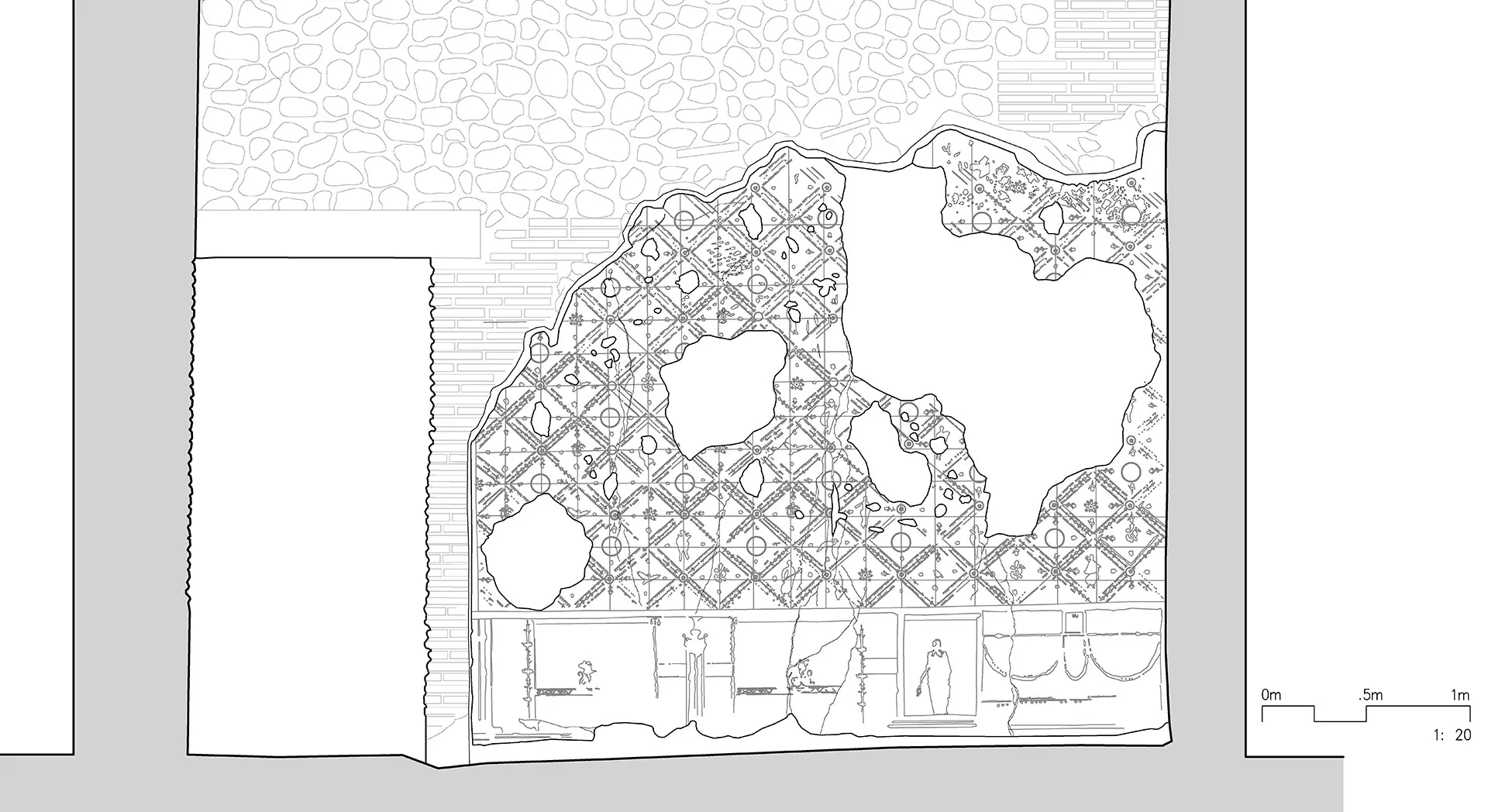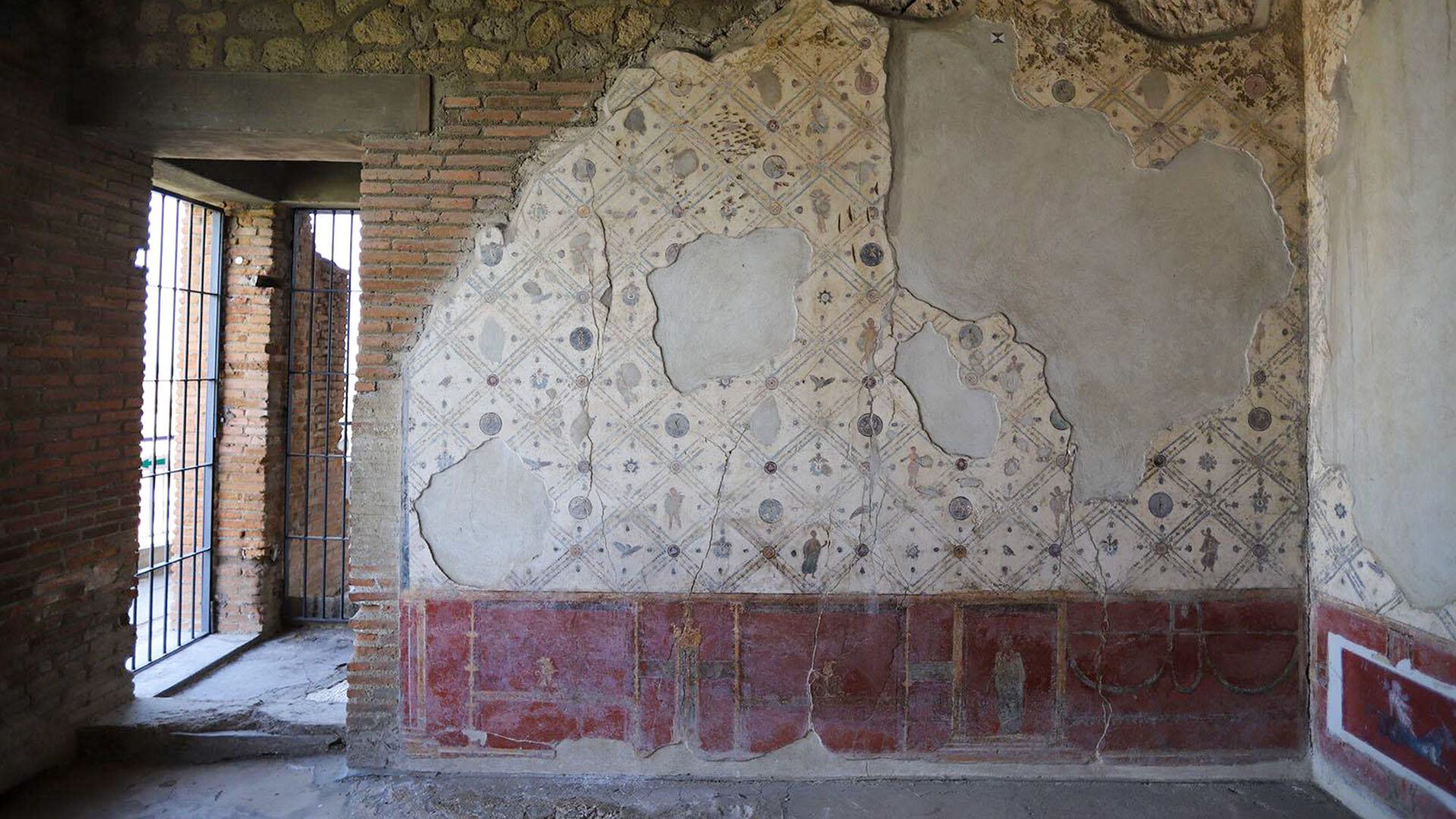- October 07, 2025
- By Maggie Haslam
In the summer of 2006, University of Maryland Professor Emeritus Lindley Vann and 19 architecture students traveled to the Bay of Naples to explore the ancient city of Stabiae, interred nearly 2,000 years ago under volcanic ash. Over the next 20 years, students returned each summer to participate in a global effort to excavate and document one of the area’s last surviving villas that catered to the Roman elite.
The culmination of their work, meticulously captured in pen and ink, is the subject of a new exhibit at the university’s Kibel Gallery. “Stabiae and the Visual Preservation of Architecture,” which opened on Friday, features roughly 70 completed student drawings of the surviving frescoes from Stabiae’s Villa Arianna, offering a glimpse of high society before the party was violently crashed by Mt. Vesuvius in 79 A.D.
“The Villa Arianna represents the state-of-the art of frescoes from that time and really demonstrates the peak of affluence and the aspirational culture of the Bay of Naples,” said Associate Professor Joseph Williams, who led the documentation of Stabiae from 2019-24 and curated the exhibit with Kibel Gallery Director Lindsey May and M.Arch student Lauren McNamara.

A survey drawing by Adan Ramos '15 M.Arch/MRED '20 of the wall in the photograph at top from Stabiae's Villa Arianna captures etchings in the plaster used to guide its geometric patterns not detected in the photograph.
A collection of holiday villas and expansive, lush gardens overlooking the bay, Stabiae was sealed under 2 meters of ash until partial excavation efforts began in the 1960s. In the late 1990s, UMD became a founding member of the Restoring Ancient Stabiae Foundation, launching an effort that introduced hundreds of students to the world of architectural research and Roman archaeology.
In 2011, UMD architecture researchers homed in on Stabiae’s Villa Arianna, which had never been comprehensively documented, racing against the time and elements to capture its intricate centuries-old frescoes. Using a combination of sketching, measurements and more recently, digital technology, students painstakingly captured details unseen by cameras, such as grooves etched in the plaster to guide geometric patterns.
The documentation was completed in 2024 and published in book form this past June by Williams, with contributions by nine co-authors and numerous student illustrators. The project, shepherded over the years by Vann, Professor Matthew Bell, Williams and others, offered an unparalleled study-abroad experience, said Bell; students could exercise their newly acquired skills to engage history in a hands-on way and contribute to a growing body of knowledge.
“Joseph did an amazing job at empowering students to engage with these historic artifacts in so many ways, from traditional hand drawings to more state-of-the-art technology,” said Bell, who has been involved in the Stabiae project since 1997. “It really showed them what they could do with their education in terms of recording a really important archeological site.”
The exhibition showcases the history of the Stabiae program as well as the methodology—from hand sketches to measurements—used to produce the final drawings. The project, said Williams, underscores the vital role architects can play in archaeology, particularly in regions like Pompeii, where ruins were excavated so quickly that it necessitated a desperate game of catch-up before they deteriorate and fade from history.
“Documentation of excavated structures is every bit as central to archaeological discovery as continuing to dig,” he said. “What’s needed is not necessarily a trowel, but the architect’s pen.”
“Stabiae and the Visual Preservation of Architecture” runs through Dec. 22 at the Kibel Gallery. It’s open to the public 10 a.m.-5 p.m. weekdays.
